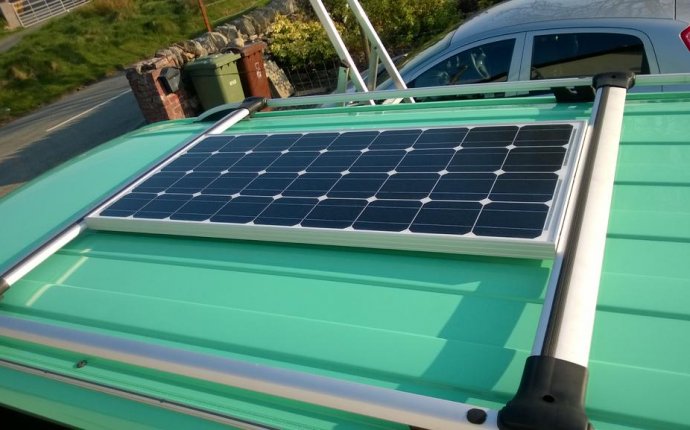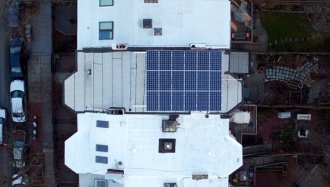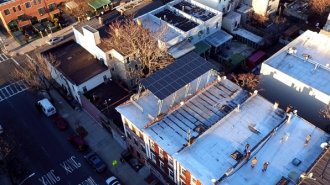
Fitting solar panels to roof
 Just as the apartments in a Brooklyn row house might be crowded inside–with living rooms barely big enough for a couch, and postage stamp-sized kitchens–building roofs are typically crowded with skylights, hatches, and equipment. Strict fire codes require a empty path six feet wide and nine feet high, leaving little room for solar panels.
Just as the apartments in a Brooklyn row house might be crowded inside–with living rooms barely big enough for a couch, and postage stamp-sized kitchens–building roofs are typically crowded with skylights, hatches, and equipment. Strict fire codes require a empty path six feet wide and nine feet high, leaving little room for solar panels.
A new canopy is a simple solution to the problem: By lifting solar panels 10 feet in the air, it’s possible to meet safety requirements and add enough solar to offset a family’s energy bill.
“If you want to lay solar panels flat on the roof, you really don’t have a whole lot of usable space, ” says T.R. Ludwig, co-founder of Brooklyn SolarWorks, which worked with local designers at Situ Studio to create the customizable canopy. “You wind up with these really small solar systems, maybe 10 panels or something like that. When you use a canopy, you raise above basically all of these requirements, and you can fit a much larger system.”
While there are plenty of options for the slanting roofs in a typical suburban home–where most residential solar panels are now–there weren’t off-the-shelf solutions for urban roofs. The canopy also solves the problem of flat roofs; panels need to sit at an angle to get the most sun.
For each roof, the startup takes measurements, plugs them into a design tool, and then builds a custom design. Because the design rises above the building code requirements, it’s much easier to get the city’s approval–a complicated process that involves 60 pages of paperwork, and a lot of time.
 The next challenge: getting neighbors on board with the designs, which pop up visibly above classic brownstones. “About 70% of the people think it looks great, ” Ludwig says. “It’s a cool looking structure, and it’s kind of futuristic in a lot of ways. A lot of people think it’s pretty sweet. But there’s also the contingent that they bought a brownstone in a landmark district and they don’t want to see anything modern.”
The next challenge: getting neighbors on board with the designs, which pop up visibly above classic brownstones. “About 70% of the people think it looks great, ” Ludwig says. “It’s a cool looking structure, and it’s kind of futuristic in a lot of ways. A lot of people think it’s pretty sweet. But there’s also the contingent that they bought a brownstone in a landmark district and they don’t want to see anything modern.”
The company may later tweak the design to blend in more with older buildings. But they also think that attitudes may have to change. “There were no solar panels back in the 1850s, ” he says. What buildings had instead were coal chutes. “It’s totally fine to have a coal chute in the front of your building, but it’s not okay to have solar panels on the back. So it’s kind of a battle–hey guys, it’s 2016, we’ve got to evolve.”
Brooklyn SolarWorks hopes to expand to other cities with older apartment buildings, from Boston to Chicago.









